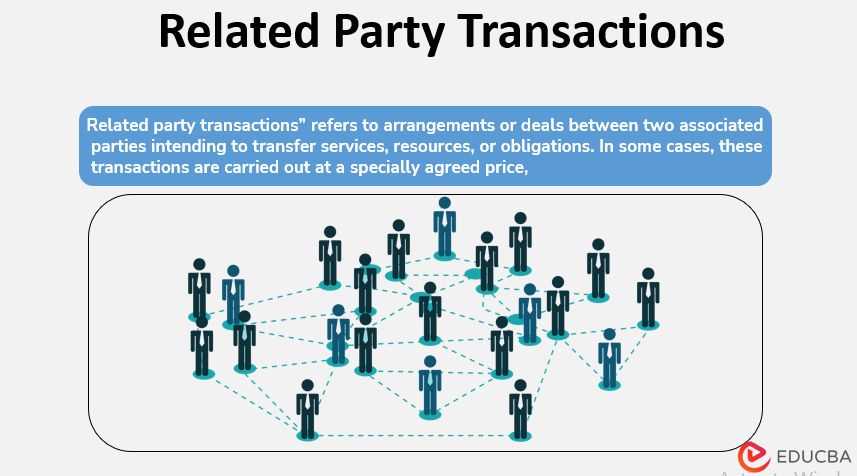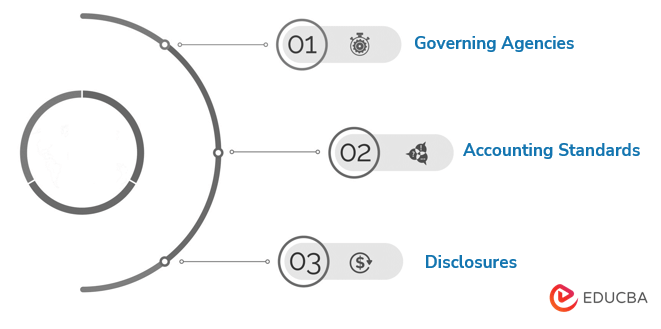Updated July 20, 2023

What are Related Party Transactions?
The term “related party transactions” refers to arrangements or deals between two associated parties intending to transfer services, resources, or obligations. In some cases, these transactions are carried out at a specially agreed price, influencing the entity’s financial statements. These transactions have profound financial implications and must be disclosed in the financial statements.
In a standard business set-up, companies usually carry out business operations and strike deals with parties with whom they share some common interest. These types of arrangements are considered to be legal. However, these transactions sometimes can result in a potential conflict of interest. As such, most of the transactions require the approval of the company’s board of directors or senior management.
Examples of Related Party Transactions
Different examples are given below:
Example #1
Let us take the following example to understand how reporting related party transactions happen. Let us assume that ASD Inc. owns 60% shares of SDF Inc. During FY2019, SDF Inc. sold goods worth $15 Million to ASD Inc.
Since ASD Inc. holds more than 51% shareholding in SDF Inc., ASD Inc. is the holding company of SDF Inc. Therefore, the purchase transaction between ASD Inc. and SDF Inc. needs to be disclosed in the financial statement of ASD Inc. and the consolidated financial statement. In the disclosure, the nature of the transactions also has to be captured.
Example #2
Let us take another example to understand the concept of related party transactions. ZXC Inc. recently invested in GHJ Inc. and owned 26% of its shares. On the other hand, GHJ Inc. holds 51% shares in BNM Inc.
Since ZXC Inc. holds more than 20% of GHJ Inc., GHJ Inc. is the associate company of ZXC Inc. Any transactions between them must be disclosed in ZXC Inc.’s consolidated financial statement. All the transactions among ZXC Inc., GHJ Inc., and BNM Inc. have to be recorded in the financial statements asBNM Inc. is GHJ Inc.’s subsidiary, again the associate company ofZXC Inc.
How are Related Party Transactions Regulated?
The regulations can be categorized into the following three heads:
1. Governing Agencies
As per the Securities and Exchange Commission (SEC), all publicly traded companies are required to disclose their transactions, which may include transactions with associates, executives, or family members, in both quarterly (Form 10-Q) and annual (Form 10-K)reporting. Consequently, most companies maintain documented records for all related party transactions.
On the other hand, the Internal Revenue Service (IRS) evaluates the transactions for any instances of “conflict of interest.” If the IRS can detect any such issue, then all the tax benefits associated with the transaction are rejected. The IRS focuses on property sales transactions and deductible payments between related parties.
2. Accounting Standards
The Financial Accounting Standards Board (FASB) is responsible for establishing accounting rules for all companies and non-profit organizations in the US. The FASB has set specific accounting standards for related party transactions, such as monitoring payment terms, competitiveness, monetary transactions, etc.
3. Disclosures
It is essential to disclose all material information about the related party transactions, including the nature of the relationship and marketing, the monetary value of the transaction, and the method of allocating current and deferred tax expenses among the related parties. In the case of common ownership, disclose the nature of the relationship between the controlling entity and the controlled entity. The disclosures ensure that there is scope for any conflict of interest.
Consequences of Related Party Transactions
Some of the significant consequences are as follows:
- A company can incur heavy losses due to related party transactions not being carried out at favorable arrangements.
- At times management personnel hides facts about such transactions to gain illicit benefits.
- Financial statements present a false and unfair picture of the company without adequately disclosing party transactions.
Threshold Limits of Related Party Transactions
The threshold limit for related party transactions varies across nations, and some of them have been captured below:
- Italy: Transactions such as the issue of securities, asset acquisition, and revenue transactions are considered material if the transaction is equivalent to 5% of the lower market capitalization or assets or a lower threshold established by the company.
- Canada: A related party transaction, which may include the issue of securities, asset acquisition, and revenue transactions, is considered material if it exceeds 25% of market capitalization. However, there are exceptions to it.
- Singapore: Asset acquisitions and revenue transactions between related parties are considered material if more than 5% of the group’s latest audited net tangible assets.
- US: Issue of securities considered to be material if it exceeds 1% of securities outstanding or a lower threshold per the review of an appropriate group within the company.
- China: Transactions such as asset acquisition and revenue transactions are considered material if the transaction is equivalent to 5% of the company’s latest audited net asset value and ¥30 million in absolute terms.
Conclusion
So, it can be inferred that it is essential that companies disclose all the material information about related party transactions to ensure that there is no scope for fraud. A transaction carried out at arm’s length price is what is recommended and prescribed by the accounting standards and policies under various governing bodies.
Recommended Articles
This is a guide to Related Party Transactions. Here we also discuss Examples and how it is regulated with significant consequences. You may also have a look at the following articles to learn more –


